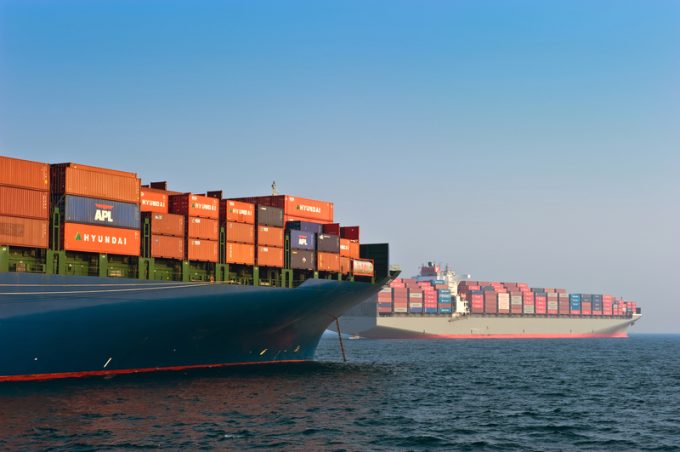Liners unveil Asia-Europe FAK price hikes to arrest steady rate decline
Container shipping lines are looking for a hike in Asia-Europe spot freight rates, announcing a ...

Ocean carriers are successfully underpinning freight rates through capacity discipline, with reports of container rollovers at Chinese export hubs and detention transhipment ports.
Flexport head of ocean freight (EMEA) Martin Holst-Mikkelsen told The Loadstar: “There is a high utilisation, and services on the [Asia-Europe] trade are relatively full for the coming two weeks.
“We are also seeing some increase in container rollovers at ports in China as well as at transhipment hubs,” he added.
Indeed, notwithstanding the slump in bookings, carriers have managed so far to keep a lid on the normal rate erosion consequences of persistent soft demand, protecting rates by withdrawing 34 – 26% – of the scheduled 130 headhaul sailings this month, according to eeSea data.
Moreover, with a few exceptions, carriers appear to have no appetite for a rates war that could plunge some lines into bankruptcy.
The North Europe component of Friday’s Shanghai Containerized Freight Index (SCFI) recorded a slight, 0.7%, uptick in its spot rate to $744 per teu, while the rate for Mediterranean ports edged up 1.5%, to $853 per teu.
And there are some optimistic signs of a recovery in the trade, with an increase in demand for bookings a few weeks out, “likely attributed to positive news surrounding Covid-19 and the gradual reopening of economies in Europe”, said Mr Holst-Mikkelsen.
Meanwhile, on the transpacific tradelane, carriers have been equally judicious with their capacity management, removing 19% of headhaul capacity in May by blanking 49 of the advertised 252 sailings so far, according to eeSea data.
Spot rates from Asia to the US west coast, as recorded by the SCFI, were up 0.3% on the week, to $1,730 per 40ft, although for east coast ports there was a 2% decline, to $2,717 per 40ft.
According to Hapag-Lloyd’s chief executive Rolf Habben Jansen, the carrier has concluded the majority of annual contracts on the tradelane, which he said were overall “satisfactory”.
Although this week there was a slight fall in long-term contract rates, as recorded by the China Containerized Freight Index (CCFI), the overall comprehensive reading is some 9% higher year on year, providing some further positive news for carriers.
There are, nonetheless, some very strong headwinds for container lines to overcome as a consequence of the coronavirus pandemic, but Bimco’s chief shipping analyst, Peter Sand, does not agree with suggestions that there will be major changes in trade post-Covid-19.
“Rolling back globalisation is not the answer to this crisis, or any crisis for that matter,” he said during a Xeneta Transportation Insights webinar last week.
Every nation “tended to look inwards when a crisis happens, and protectionism is bound to show its ugly face once again”, he said. But he argued that any trend towards mass near-sourcing would result in “fewer goods, lower quality and higher prices”.
And all will not necessarily be rosy for ocean carriers post-crisis, according to Mr Sand, with container shipping remaining a “cost-cutting game” and a “marginal profit business”.
Comment on this article
Martyn Benson
May 11, 2020 at 3:25 pmHolding rates at variances of one or two percent from pre-corona is no victory when the real cost is to withdraw hundreds of sailings and tens of thousands of slots. End result will be large and costs to idle fleet, less productive container cycles and box management (wrong boxes in the wrong place at the wrong time and more incremental leasing) but with the overall reduced income more thinly spread to cover the fixed costs.
First there was a slow down in Chinese exports in March and then the knock-on effects of lock-downs in the receiving ports ion Europe and the US, This then translates into congestion and box imbalances and the net result will not be ‘holding the rates’ but bottom line canyons of red figures which could spell disaster when the additional new-build mega ships all trickle into action.